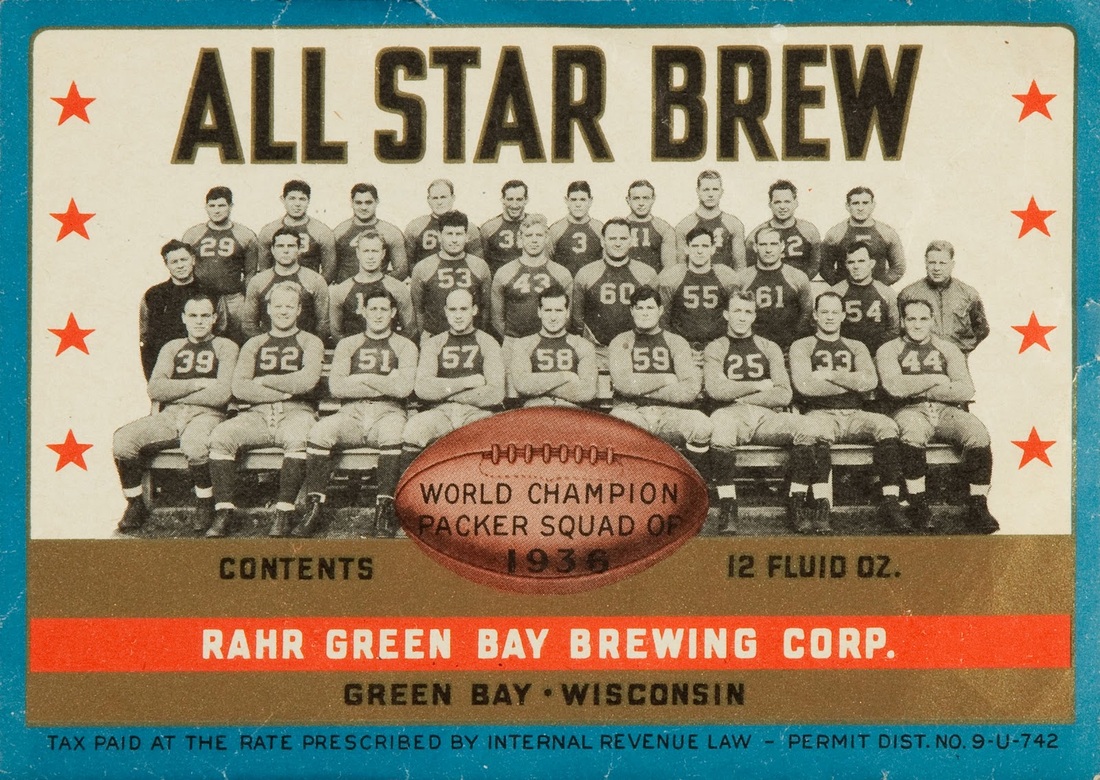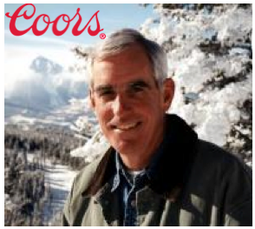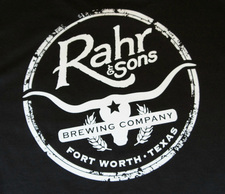a joyful aspect of the beer business.
And if they include a lesson for every brewer in America,
so much the better.
| The Packers and Rahr’s had been promotional partners dating back to at least 1936. That year, the team won the world championship, and the brewery featured a Packers team photo on the label of their All-Star Brew brand (long before such a marketing move would’ve been nixed by regulators). Even into the sixties, when the brewery was on its last legs, the football team and Rahr's still cooperated. But the going wasn't easy, at least on the beer side. Only two beer brands--Rahr’s and Wisconsin's favorite, Pabst Blue Ribbon--were then sold at Lambeau Field. I know this for sure because as a freshman pledge, I was compelled to vend beer at the games, and return all profits to the fraternity. Worse, as a rookie vendor, you had no choice; you were only allowed to sell Rahr’s. Derided whenever its name was mentioned, the brand seemingly was no one’s favorite beer. Quality control had deteriorated, so the "best beer in any case" slogan may have been a bit of an advertising overstatement. |
Before I graduated from college, Rahr's was gone, the brewery shuttered and ultimately demolished. Just one more in the declining number of domestic beers. America may have been ready to embrace the Packers as the nation's team, but local beer back then meant old brands with odd flavor, and unreliable quality.
But one thing the pundits never appreciated was the pivotal asset Coors had in the presence of the fourth generation of the family actively leading the business. Unlike the Rahr’s name on the bottles I sold at Lambeau, the name on the Coors label was also on the boss’ office door.
| Ad agencies routinely overstate their importance to a client’s success, but one contribution we made lay in urging Pete Coors to become the TV spokesperson for the brewery. Not in some feel-good corporate advertising, but in commercials designed to communicate the real differences that made Coors beers special. |
Which brings me to today’s craft beers, and what could well be their most valuable asset. It’s one they all share with the Coors of my time. And it’s the same one Rahr’s quietly forfeited so long ago.
That asset? Virtually every craft brewery benefits from the hand of the owner in all the key decisions. Ingredient selection. Recipe choices. Label design. Promotional events. Even how the trucks are painted. This means craft beer drinkers know for sure there’s a flesh-and-blood person responsible for their beer, not some soulless corporation. But is this really their most valuable asset?
| Maybe we should ask Frederick “Fritz” Rahr who opened Rahr & Sons Brewing Company in Fort Worth, Texas in 2004. He can trace his family brewing pedigree back more than 160 years. His German-immigrant ancestors started a malting operation and brewery in Manitowoc, Wisconsin in the mid-1800s. And in 1858, one of them, a certain Heinrich Albert Friedrich Rahr--also known as Henry--left Manitowoc for Green Bay. He would open his brewery there eight years later. |
There's definitely a lesson at work here.
And maybe a ghost.









 RSS Feed
RSS Feed
